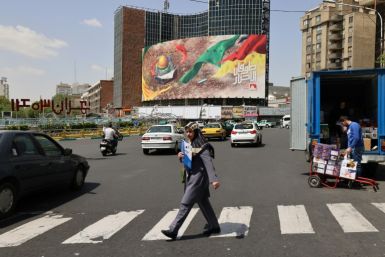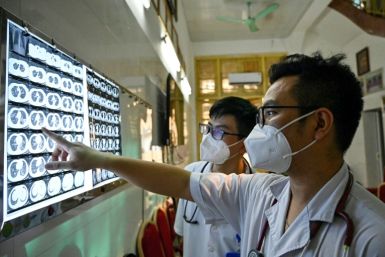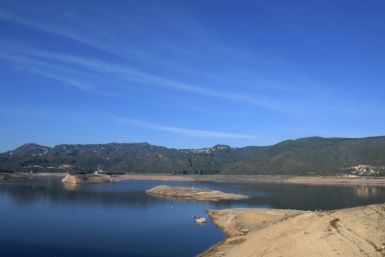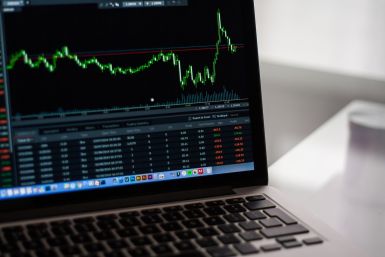Imports drag U.S. second-quarter growth lower
U.S. economic growth was revised down to a sluggish 1.6 percent annual rate in the second quarter, dampened by the largest increase in imports in 26 years, the government said on Friday.
Gross domestic product growth previously was estimated at 2.4 percent and analysts had feared it would be pushed down even more sharply, but business investment was robust enough to partially cushion the blow from imports.
Analysts polled by Reuters had forecast GDP, which measures total goods and services output within U.S. borders, would be revised to a 1.4 percent growth rate. The economy grew at a 3.7 percent pace in the first three months of the year.
The instant reaction is that it isn't good but we thought it might be worse, so there might be a bit of relief, said Nigel Gault, chief U.S. economist at IHS Global Insight in Lexington, Massachusetts.
U.S. stock index futures added to gains after the report, while Treasury debt prices extended losses. The U.S. dollar rose against the yen.
The soft GDP report came shortly before Federal Reserve Chairman Ben Bernanke addresses monetary policymakers at their annual retreat in Wyoming. Financial markets will be closely watching the 10 a.m (3 p.m. British time) speech for any hints the U.S. central bank may be mulling new measures to try to stimulate economic activity.
BAD POLITICAL OMEN
A slackening recovery poses a major political challenge for the Obama administration and the Democratic Party two months away from crucial mid-term elections that could shift the balance of power in Congress in favour of Republicans.
A Reuters/Ipsos poll this week found Obama's approval rating at 45 percent, overtaken for the first time by a 52 percent disapproval rating.
Despite concerns the economy may be at risk of slipping back into recession, analysts said the most likely prospect was for continued soft expansion rather than a double dip downturn.
There is no doubt we are losing momentum in the economic recovery, said Robert Dye, senior economist at PNC Financial Services in Pittsburgh. But if we define recession as two or more consecutive declining quarters of GDP, I think we are not going to go there.
We are going to see a pattern where we may have declining GDP in one quarter followed by smaller gains in the next quarter, bouncing along the bottom as it were, Dye said.
The recovery from the worst economic downturn since the Great Depression had been largely fuelled by a $862 billion government stimulus package and businesses rebuilding inventories from record low levels.
IMPORTS CHOKING GROWTH
Growth in the last quarter was stifled by a 32.4 percent surge in imports, the largest since the first quarter of 1984, dwarfing a 9.1 percent rise in exports. That created a trade deficit, which sliced off 3.37 percentage points from GDP, the largest subtraction since the fourth quarter of 1947.
A smaller contribution from business inventories than initially estimated also restrained output. Business inventories increased only $63.2 billion, rather than $75.7 billion, adding a slim 0.63 percentage point to GDP.
Inventories, which had been a major driver of the recovery that started in the second half of 2009, increased $44.1 billion in the first three months of the year.
Excluding inventories, the economy expanded at a 1 percent rate, instead of the 1.3 percent pace reported last month.
There were some bright spots in the report, with growth in consumer spending revised up to a 2 percent rate from 1.6 percent. Consumer spending grew at a 1.9 percent rate in the first quarter.
Stubbornly high unemployment has dampened consumer spending, which normally accounts for 70 percent of U.S. economic activity. Spending added 1.38 percentage points to GDP last quarter.
Although businesses have been reluctant to hire new workers, they have been splurging on equipment and software, which also contributed to the surge in imports. Business investment was revised up to a 17.6 growth percent rate, the largest increase since the first quarter of 2006, from the previously estimated 17 percent pace.
Investment in equipment and software was the strongest since the fourth quarter of 1983. Spending on structures was revised to show a far smaller increase than previously estimated but still posted the first rise in spending on structures since the second quarter of 2008.
Growth in new home construction was revised down slightly to 27.2 percent from 27.9 percent. The sector, which was a drag on growth in the first quarter, was lifted by a spurt in building activity spurred by a popular home-buyer tax credit, which has since expired. The rate of increase was still the biggest since the third quarter of 1983.
Residential investment had contracted at a 12.3 percent rate in the first quarter.
The report also showed corporate profits rose 2.9 percent in the second quarter after increasing 5.8 percent in the first three months of the year.
(Reporting by Lucia Mutikani; Editing by Neil Stempleman)











